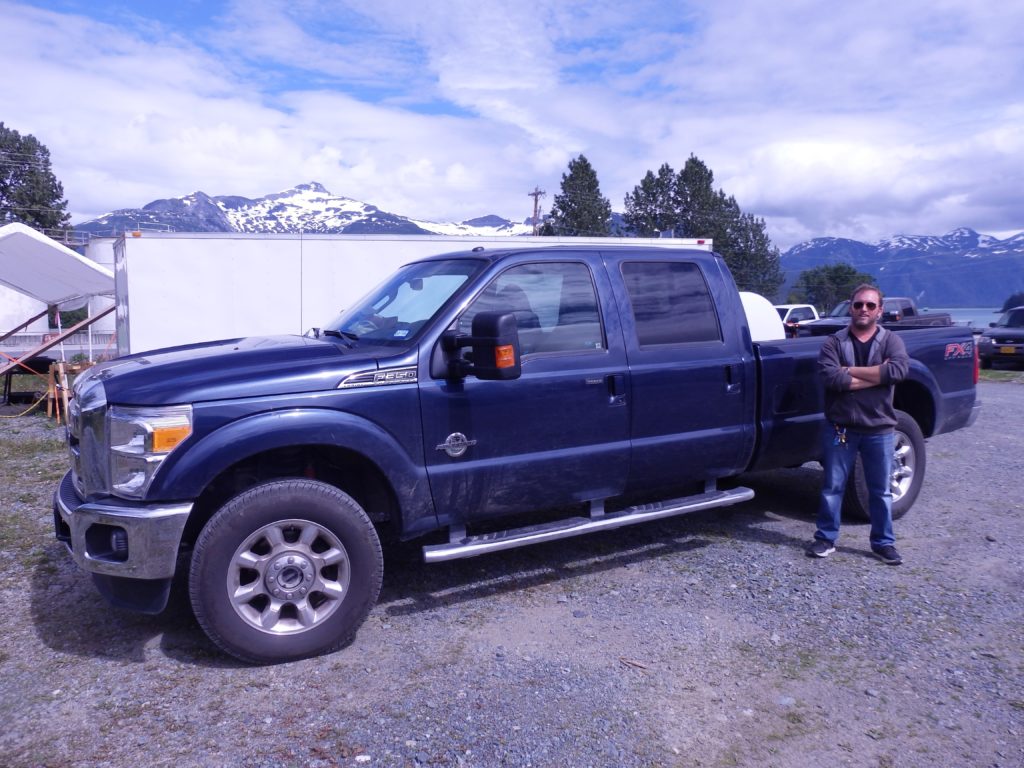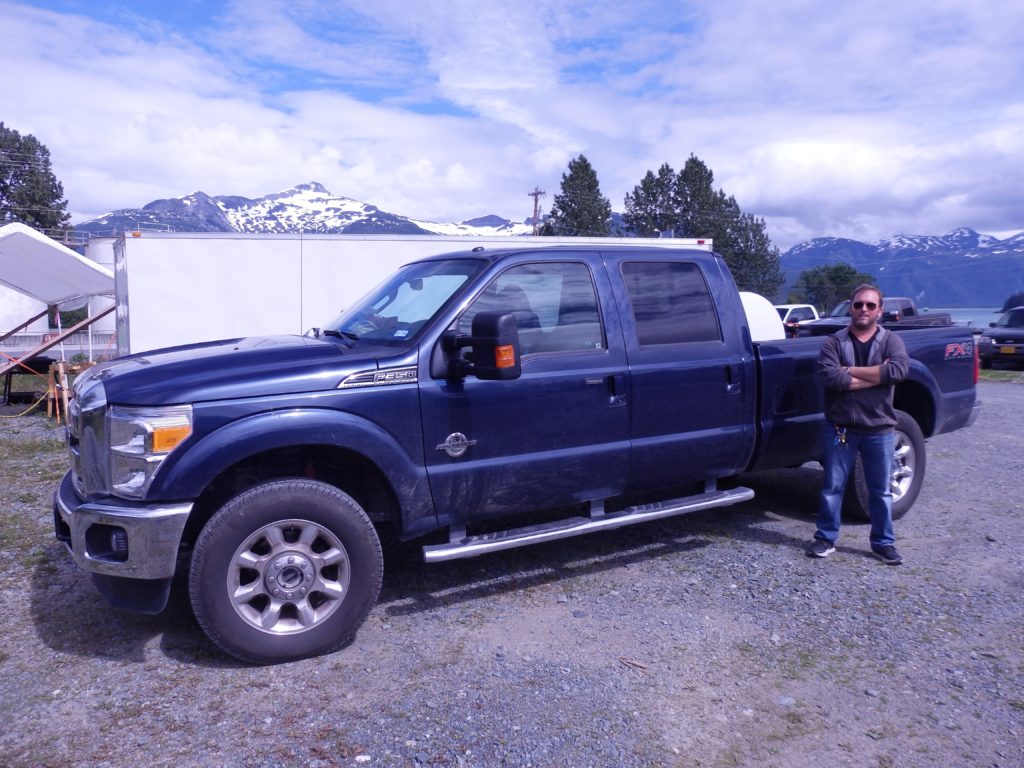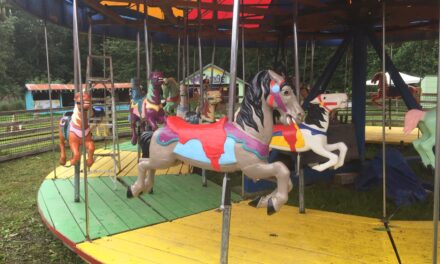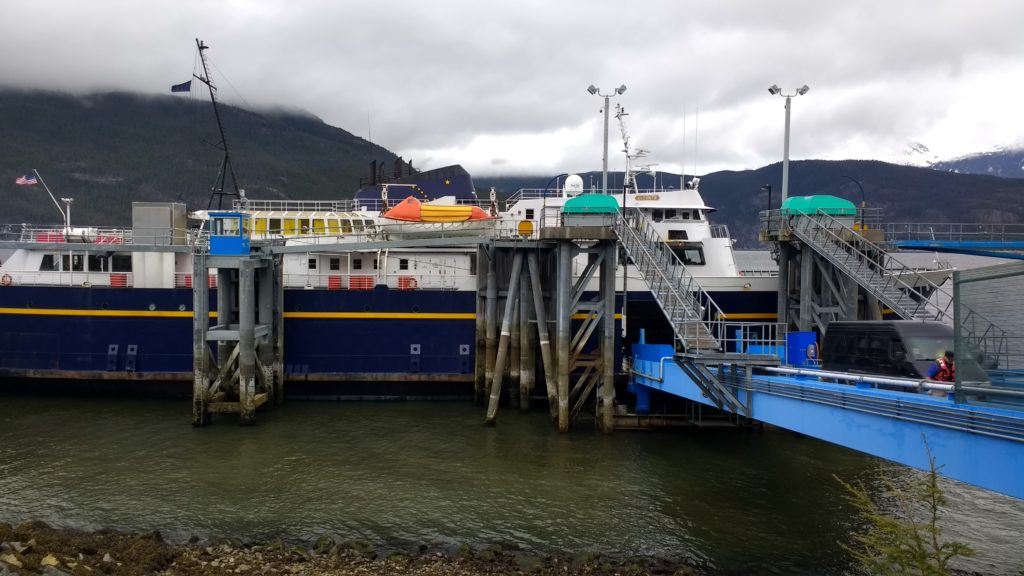
Haines resident Alex Stock has signed up to drive for Uber. He’s waiting on a background check and vehicle inspection. (Emily Files)
In visits to the Lower 48, Alaskans may have caught a ride in an Uber or Lyft car. Now, people around the state can use the ride-sharing companies at home. This month, Alaska became the last state to make way for the transportation apps. In small towns where taxi service has struggled to survive, the companies could fill a need.
If you’re catching an Uber in New York or L.A., you might expect a sleek black sedan. But Haines resident and aspiring Uber driver Alex Stock has a Ford Super Duty truck.
“It’s Alaska, what do you expect?” Stock said.
Alaska Gov. Bill Walker gave ride-sharing companies like Uber and Lyft the green light to operate in the state earlier this month. He signed into law House Bill 132, which permits transportation network companies in the state.
Uber did operate in Alaska for a short time a few years ago. But it shut down after a dispute over labor rules.
Uber and Lyft’s services are based on a smartphone app that connects passengers and drivers. Drivers are considered independent contractors and they use their own cars.
For now, Lyft is only in Juneau, Anchorage and Fairbanks. But Uber says it should be available wherever there are interested drivers.
“I’m gonna sign up, see how it goes,” Stock said. “I think it’ll be a good way to supplement my income.”
Stock runs a scooter rental business that caters to cruise ship tourists. He’s getting involved in Uber for the same reason he started the scooter business: Haines has no taxi service or public transportation.
“That was probably the biggest concern I started hearing from tourists,” Stock said. “I said, ‘Well you can rent a scooter from me. Other than that, I don’t really have an answer for you.’ Now, this seems to be the answer.”
“If Uber would be able to provide the same level of service that a taxicab company could provide, or better, then I would certainly encourage the community to go that route,” said Haines Borough Manager Debra Schnabel.
Schnabel says taxi companies haven’t lasted here because of the high cost of insurance required for commercial vehicles under borough code. But it doesn’t look like Uber drivers will have that burden.
HB 132 essentially disallows local governments from imposing regulations on ride-sharing companies. Municipalities can levy a sales tax. But if they want to go beyond that, the law requires a public vote.
Alaska Municipal League Director Kathie Wasserman is frustrated by the lack of local control.
“The legislature, for whatever reason, promised an out-of state-company that ‘oh yeah, if you don’t want regulation to come to our state, we’ll exempt you.’ What does that say to every other business in the state?” Wasserman said. “I mean that just seems crazy.”
The City of Juneau was also opposed to the bill’s limited options for local regulation.
But there are some restrictions. Not just anyone can drive for Uber or Lyft. Prospective drivers must pass a federal background check, which screens for driving and criminal history. They have to be 21 or over. And cars must undergo an inspection and cannot be more than 12 years old.
Soon-to-be Uber driver Stock is still waiting on the background check. He downloaded the vehicle inspection form, which he’ll take to a local mechanic. He hopes to be driving for Uber by the end of the week.
When asked how he plans to maintain a five-star Uber rating (passengers and drivers can rate each other), Stock said he expected people would just be happy to be able to get an Uber ride in Haines. And, he’ll probably wash his truck before picking up his first fare.









